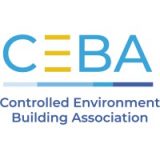Dust Collection Systems
Dust Collection systems are required for use with joint cleanout and crack chasing saws, grinders and all related equipment for working on concrete
Gone are the days when a shop vac hooked to a concrete saw constituted a “dust collection system.” Recently implemented OSHA crystalline silica standards require contractors to have robust HEPA-filtered dust collection systems and written plans in place to minimize exposure to crystalline silica when working with concrete.
Below you will find additional information and a list of resources which discuss the current regulations and requirements for dust collection systems used in relation to joint preparation and concrete repair work. We encourage all contractors and building owners to familiarize yourselves with these standards and develop a plan to minimize crystalline silica exposure.
Metzger/McGuire’s distribution partners carry a wide variety of dust collection equipment to help you comply with OSHA Crystalline Silica Standards. Our technical services team can also hep steer you in eth right direction and discuss the dust collection requirements specific to the use and operation of joint cleanout and crack chasing saws, grinders and more.
OSHA’S Crystalline Silica Standard
What you need to know…
OSHA’s new standards for silica in the workplace significantly reduce the permissible exposure limits (PEL). It’s estimated that tighter regulations on silica dust in the workplace will save over 600 lives and $8 billion in associated costs.
Crystalline Silica Standard 29 CFR 1926.1153 applies to all exposures of respirable crystalline silica, except where exposure will stay below the OSHA action level of 25 ug/m3; 8-hour time-weighted average.
Some examples of materials that are commonly involved under this standard include sand, concrete, mortar, block, terrazzo, natural stone, and thinset/grout/stucco/color hardeners.
Enforcement
| Type of Violation | Previous Maximum Penalty | New (Current) Maximum Penalty*
| Serious | $7,000 per violation | $12,471 per violation
| Failure to Abate | $7,000 per day | $12,471 per day
| Willful or Repeated | $70,000 per violation | $124,709 per violation
*Fine information supplied from OSHA.
Enforcement Date: September 23, 2017
Metzger/McGuire firmly believes in a “Safety First” approach to all contracting work and will gladly discuss ways in which you can ensure that your safety program complies with all regulations. Below are listed some minimum suggested guidelines to ensure that your operations comply with the new regulations.
For Concrete Joint Cleanout/Filler Removal or Repair
Dust Collector Requirements
- HEPA Filtered
- 99% or Greater Efficiency
- Cyclonic Pre-Separator or Filter-Cleaning Mechanism
- 25 CFM Minimum for Each Inch of Blade When Using Saws or Grinders
Respirator Masks
For any individual working indoors 4+ hours:
- Half Mask/Dust Mask (Fit Tested) with minimum Assigned Protection Factor (APF) of 10
When Using Armor-Hard Kit, Armor-Hard Extreme Kit, or Any Product Modified with Silica Sand
Respirator Masks
For any individual working indoors 4+ hours:
- Half Mask/Dust Mask (Fit Tested) with minimum Assigned Protection Factor (APF) of 10
For Additional Information and Resources We Recommend Reviewing the Following:
https://www.osha.gov/pls/oshaweb/owadisp.show_document?p_table=STANDARDS&p_id=1270
http://www.jondon.com/how-to/technical-tips/concrete-surface-prep/osha-pel-silica-standard.html#step1
http://www.ermatorusa.com/blog/oshas-new-regulations-on-respirable-silicone/
OSHA Guide Designed to Help Small Businesses Comply with Construction Industry's Silica Final Rule
Nov 15, 2016 Source: Occupational Safety & Health Administration
OSHA has released a Small Entity Compliance Guide for Construction that is intended to help small business employers comply with the agency's Final Rule to Protect Workers from Exposure to Respirable Crystalline Silica. Click above to read more.






